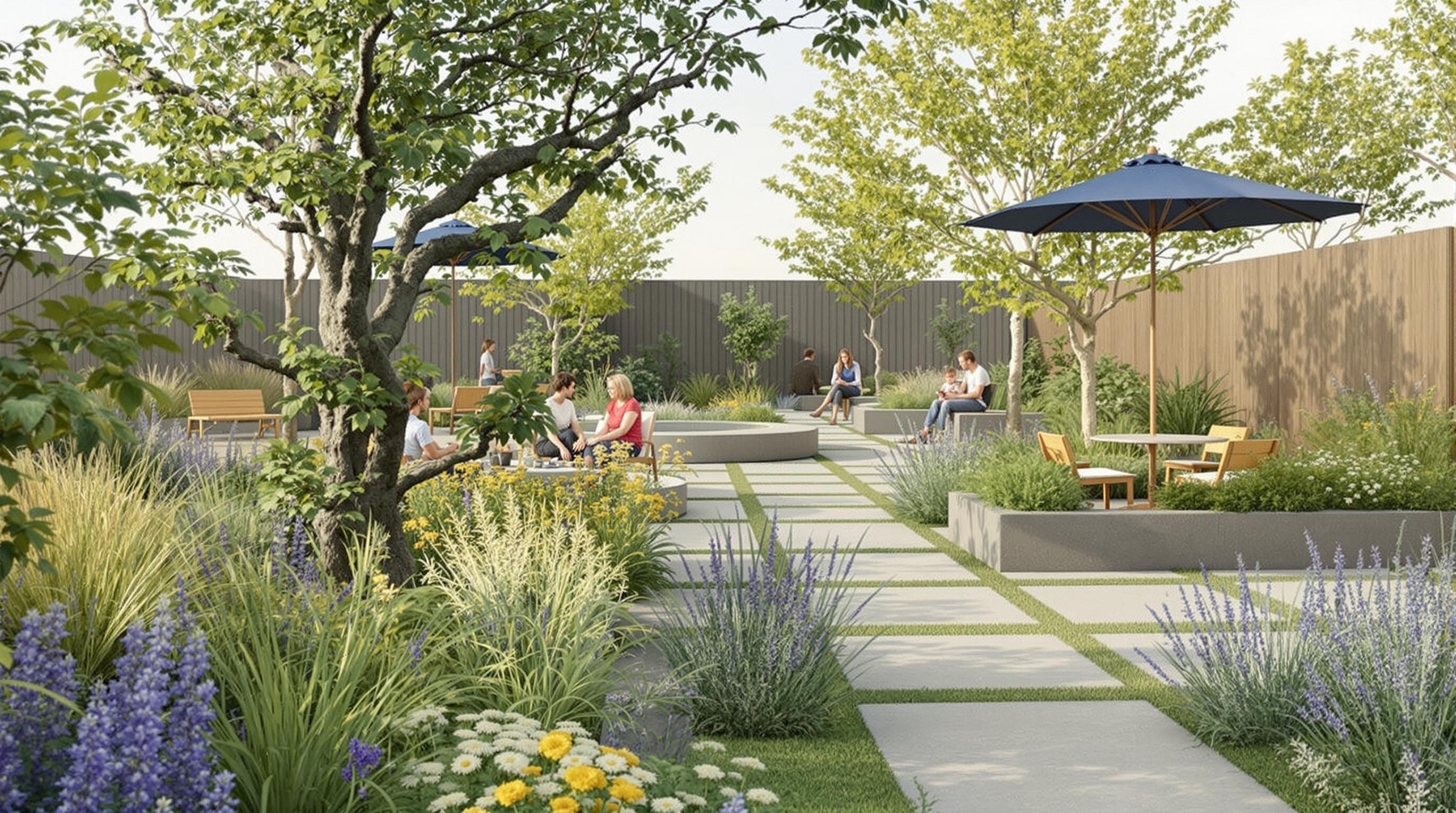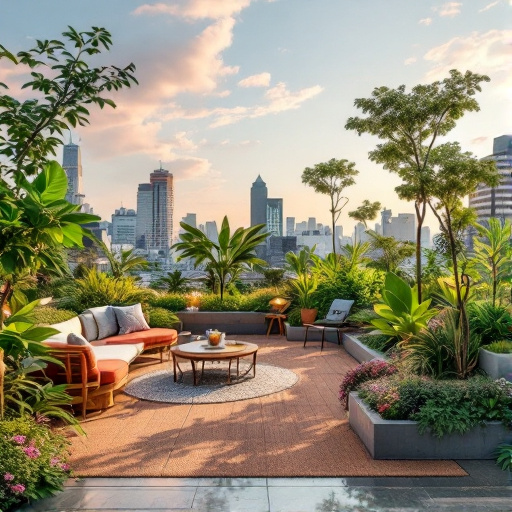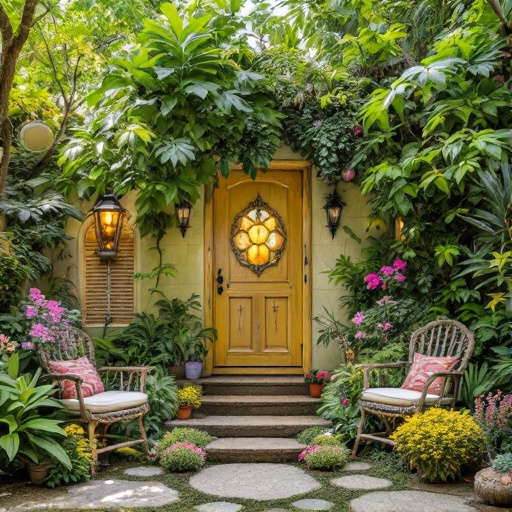Featured Articles
- 12 Innovative Strategies to Design Outdoor Spaces that Enhance Mental Wellness and Cognitive Function
- Blending Nature and Nostalgia: Designing Outdoor Spaces Inspired by Forgotten Childhood Playgrounds
- Rewilding Urban Landscapes: Transforming Concrete Jungles into Biodiverse Outdoor Sanctuaries
- Rewilding Urban Spaces: Designing Outdoor Retreats Through Nature's Chaotic Beauty
- Unconventional Outdoor Oasis: Transforming Urban Rooftops into Lush Green Retreats for Mindful Living
12 Innovative Strategies to Design Outdoor Spaces that Enhance Mental Wellness and Cognitive Function
12 Innovative Strategies to Design Outdoor Spaces that Enhance Mental Wellness and Cognitive Function
12 Innovative Strategies to Design Outdoor Spaces that Enhance Mental Wellness and Cognitive Function
1. Incorporate Biophilic Design Principles
Biophilic design involves integrating natural elements such as plants, water features, and natural light into outdoor spaces. This approach connects people with nature, which research shows can reduce stress and improve mental clarity. According to the Human Spaces report by Terrapin Bright Green, environments with natural elements lead to a 15% improvement in wellbeing and cognitive function.
Using native plants and organic shapes not only enhances aesthetics but also supports local biodiversity. This interaction with a thriving ecosystem fosters mindfulness and a deeper sense of place. It helps occupants feel grounded and revitalized, counteracting the fatigue often caused by urban environments.
Designers can incorporate living walls, garden beds, and water installations to enrich sensory experiences. These elements stimulate sight, sound, and even touch, engaging the brain and encouraging relaxation. The principle is to create a seamless flow between the built environment and the natural world, promoting mental wellness.
2. Design Spaces for Social Connection
Social interaction is critical for mental health and cognitive resilience. Designing outdoor spaces with communal seating, open lawns, and gathering areas encourages positive social engagement. These features support conversations and shared experiences that reduce feelings of loneliness and isolation.
Including flexible spaces for group activities like yoga, storytelling, or small workshops further enhances community bonds. Open, inviting layouts with clear sightlines foster user comfort and approachability. This can lead to more frequent use and social interaction, both essential for emotional wellbeing.
Creating safe, inclusive environments where diverse groups feel welcome promotes mental inclusivity. Spaces that accommodate all ages and abilities contribute to cognitive health by fostering empathy and reducing social barriers, as highlighted in studies from the American Psychological Association.
3. Integrate Sensory Gardens
Sensory gardens are designed with plants and materials that awaken the senses: touch, smell, sight, taste, and sound. Such environments have been shown to enhance cognitive stimulation and emotional regulation, particularly in aging populations and those with mental health conditions.
Lavender, jasmine, and rosemary can uplift mood through aromatic qualities, while textured plants like lamb’s ear invite tactile engagement. Adding wind chimes or gentle water sounds engages auditory senses, creating a multi-dimensional interaction that encourages mental presence.
By offering varied sensory experiences, these gardens provide therapeutic benefits such as reduced anxiety and improved focus. This approach aligns with evidence from horticultural therapy which emphasizes nature’s role in cognitive healing and wellbeing.
4. Include Quiet Zones for Mindfulness
Quiet zones within outdoor spaces are essential retreats for contemplation and mindfulness. These areas can buffer sensory overload and create sanctuary spots where mental restoration occurs naturally. Regular time spent in such environments enhances attention span and emotional balance.
Design features for quiet zones include comfortable seating, natural sound barriers like hedges, and gentle landscaping that limits distractions. Offering shade and shelter helps users remain comfortable for longer periods, enabling deeper relaxation.
Practicing mindfulness in these quiet corners helps reduce stress hormones and promotes neuroplasticity, or the brain’s ability to adapt. Research from the University of California suggests that even brief exposure to green quiet spaces improves executive function and working memory.
5. Foster Physical Activity Through Design
Active movement improves cognitive function by increasing blood flow and releasing endorphins, chemicals that boost mood. Outdoor spaces that encourage walking, jogging, or gentle exercise support mental wellness effectively. Incorporating winding paths, stairs, or fitness stations motivates physical engagement.
Varied terrain and visual variety maintain interest while preventing monotony during exercise, stimulating both mind and body. Outdoor gyms or balance courses offer playful challenges that improve coordination and cognitive flexibility.
Design should ensure safety with clear sightlines and non-slip surfaces, encouraging regular use. The CDC recommends combining nature exposure with physical activity for compounded benefits to mental health and cognitive vitality.
6. Utilize Color Psychology
Colors in outdoor design influence mood and mental processes profoundly. Calming shades like greens and blues reduce anxiety, while bright colors such as yellows and oranges can uplift and stimulate creativity. Thoughtful color placement can direct attention and evoke desired emotional responses.
Plant selection, painted surfaces, and decorative elements can all reflect these principles. For example, a seating area accented with blue tones may encourage relaxation, whereas an orange climbing structure may energize children and adults alike.
Studies in environmental psychology affirm that purposeful color schemes in nature-based spaces promote positive cognitive effects by enhancing focus, mood, and social behavior. Designers should balance vibrant and soothing hues to achieve optimal mental wellness outcomes.
7. Maximize Natural Light
Exposure to natural light regulates circadian rhythms, which are crucial for mental health and cognitive efficiency. Designing outdoor spaces with open sightlines and minimal shading helps maximize sun exposure during daylight hours. Proper balance prevents glare while ensuring comfort.
Seating placed in sunlit areas encourages time spent outside, boosting vitamin D synthesis essential for brain function. Transitions from sunny to shaded areas provide rest opportunities that protect from overheating and enhance usability.
Daylight exposure has been linked to reduced depression rates and improved attention spans, as noted by a study from Harvard T.H. Chan School of Public Health. Intelligent design to capture natural light is therefore foundational to outdoor mental wellness spaces.
8. Promote Interaction with Water Elements
Water features like fountains, ponds, or streams provide soothing sounds and visual appeal that calm the nervous system. Known as “blue space,” these elements enhance mental relaxation and cognitive restoration. Ambient water sounds mask urban noise, reducing cognitive fatigue.
Designing accessible edges where users can safely interact with water—such as shallow pools or mist sprays—engages additional senses. Contact with water has therapeutic effects, lowering anxiety and raising mood through tactile stimulation.
Research published in the International Journal of Environmental Health Research confirms that proximity to water correlates with decreased stress and improved cognitive performance. Thus, integrating water thoughtfully is a powerful mental wellness strategy.
9. Create Multi-Use Zones
Flexibility within outdoor spaces supports a variety of mental wellness activities, from study and reading to play and social events. Multipurpose zones encourage users to select the kind of engagement or solitude they need at any given moment, promoting autonomy and cognitive self-regulation.
Features like movable furniture, modular garden beds, and adjustable shading structures allow customization throughout the day and with changing seasons. This adaptability sustains user interest, preventing stagnation and fostering ongoing cognitive stimulation.
A field study conducted by the University of Michigan found that varied environments enable better mood regulation and creativity by offering diverse stimuli and social opportunities. Multi-use design thus supports comprehensive mental and cognitive health.
10. Support Technology-Enhanced Nature Interactions
Emerging technologies can augment outdoor experiences to deepen mental wellness. Apps that guide mindfulness meditation, augmented reality nature tours, or biofeedback devices help users tune into their surroundings and internal states more effectively.
Incorporating discreet charging stations or free Wi-Fi enables sustained use of these tools without disrupting natural aesthetics. This integration should prioritize balance, encouraging presence rather than distraction.
A 2022 review in Frontiers in Psychology highlights how digital tools, when blended carefully with nature exposure, enhance cognitive engagement and emotional wellbeing. This synergy represents a promising frontier for outdoor space design.




